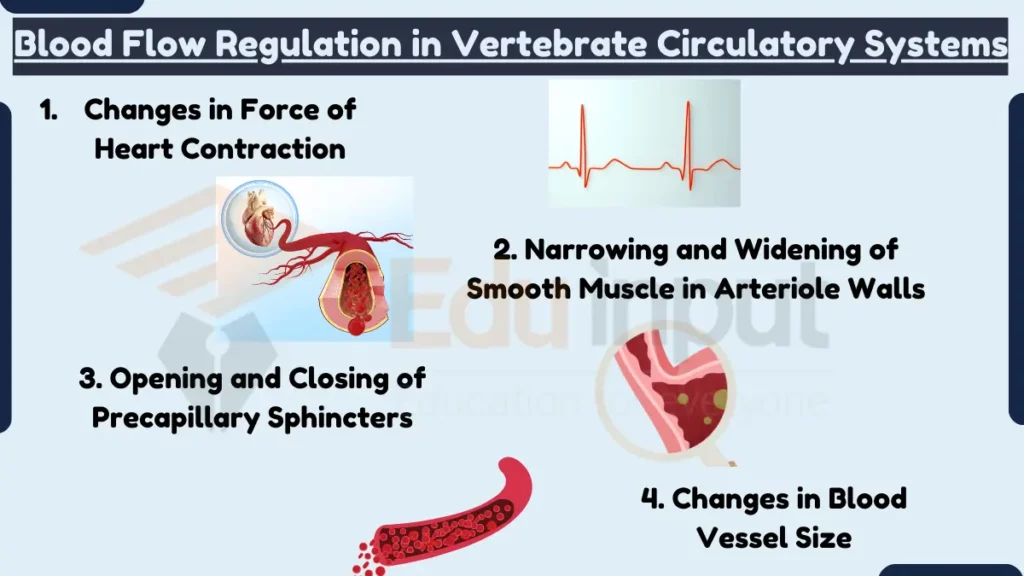Blood Flow Regulation in Vertebrate’s Closed Circulatory Systems
The Vertebrate’s body utilizes cardiac contraction control, arteriolar smooth muscle activity, precapillary sphincter management, and blood vessel size adjustment to regulate blood pressure in the body. These mechanisms allow the body to adapt to varying physiological demands and maintain health and vitality.

What mechanisms are used to regulate blood pressure in closed circulatory system of vertebrates?
Blood flow in vertebrates’ closed circulatory system is regulated through several essential mechanisms:
1. Changes in Force of Heart Contraction
The heart acts as the central pump that drives blood throughout the circulatory system. It can adjust the strength of its contractions to affect blood pressure.
When the heart contracts with greater force, blood is pumped with more pressure, raising blood pressure. Conversely, weaker contractions reduce blood pressure. This shows how the heart plays a dynamic role in regulating blood pressure.
2. Narrowing and Widening of Smooth Muscle in Arteriole Walls
Arterioles, the smallest branches of arteries, have smooth muscle in their walls. This smooth muscle can contract and relax, allowing them to control blood pressure. When arterioles constrict, or narrow, they increase resistance, causing blood pressure to rise.
In contrast, relaxation of arteriolar smooth muscle lowers resistance and decreases blood pressure. The autonomic nervous system controls this process closely, responding to the body’s needs in real-time.
3. Opening and Closing of Precapillary Sphincters:
Precapillary sphincters are small, ring-shaped structures made of smooth muscle that are strategically positioned at the entrance of capillaries. These sphincters act as gatekeepers, regulating blood flow into capillaries.
When these sphincters open, they allow a greater volume of blood to flow into the capillaries, increasing the supply of oxygen and nutrients to surrounding tissues. Conversely, closing these sphincters reduces blood flow to specific areas, adapting the distribution of blood to match the body’s needs.
4. Changes in Blood Vessel Size
Blood vessels, including arteries and veins, can actively constrict (vasoconstriction) or dilate (vasodilation) to modulate blood pressure. Vasoconstriction decreases the diameter of blood vessels, increasing resistance and raising blood pressure.
On the other hand, vasodilation enlarges blood vessels, lowering resistance and decreasing blood pressure. This dynamic adjustment is a important to manage blood pressure efficiently.
Closed Circulatory System Dynamics
In vertebrates, blood flows through a closed circulatory system, starting with arteries and ending in veins. Arteries carry oxygenated blood under high pressure from the heart to various tissues and organs. This high-pressure flow ensures rapid distribution of oxygen and nutrients, meeting the body’s metabolic demands.
Veins, in contrast, return deoxygenated blood at lower pressure back to the heart, where it is pumped again into the pulmonary circulation for reoxygenation. This system’s design allows for efficient resource delivery and waste product removal while maintaining a steady and sustainable blood flow.

 written by
written by 

Leave a Reply